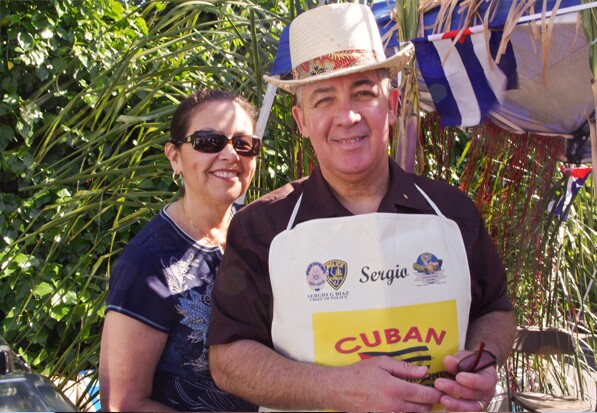From L.A. to Riverside, a Smooth Transition for a Chief of Police

Dressed down in a Havana-style guayabera shirt, Cuban-born Sergio Diaz not only made a statement where he was from, but where he ended up after retiring from the LAPD.
He was dressed to be part of a Cuban-themed booth in a competitive cook-off that had men face off, mano-a-mano, to raise funds for a local YWCA. But first, he made a few rounds, including a stop at a local park where he was warmly welcomed by neighborhood residents celebrating Cinco de Mayo.
It was a small-town touch in a mid-sized city for the former big city deputy chief who was sworn-in as Riverside's Chief of Police last summer when he quickly went native.
"I thought it was very important to establish quickly I am a Riversider," said the 56-year-old, who is expecting to be a grandfather in November. "I think it was important to two audiences. The community can see you bought into the city and that it's not a steppingstone to anything else. It is also to the cops to see, since a large number live in the city--they see me involved in other community things outside the department."
Not pausing much while speaking, he scans the park crowd like a beat cop while crediting what helped him make changes within the department: "My greatest qualification is: I am not from here."
Diaz' last appointment at the LAPD was replacing the deputy chief criticized by Chief William Bratton for the "command-and-control breakdown" at the MacArthur Park "May Day melee." Bratton appointed Diaz to command operations for LAPD's central bureau.
On a smaller scale, the Riverside Police Department had its own incidents that went public, namely the sudden departure of Riverside's former Chief after a high profile DUI stop in February 2010. The department itself at the time was still working on repairing a damaged reputation after a controversial shooting of a 19-year-old black woman back in 1998.
It prompted Diaz to study what Riverside's department needed. He considered morale to be fine, but felt one problem was the unraveling internal department politics.
"There is, at some degree, some dissension at the higher level," he explained of the 350-person department. "The department is well staffed and well trained. But some of these folks have been with each other for 25 to 30 years under the same roof--not like Los Angeles, where there were 50 different places you can work. People who have been around a long time, they will remember every slight. That is very unhealthy. That is the biggest challenge I have had here; getting people in the same direction."
Slights can also be found between neighborhoods and police, like the neighborhood of Casa Blanca, where the Cinco de Mayo park visit was made. "You can't discount history. This is a neighborhood that has had its crime challenges," he said. "That relationship with police is a little part of the folklore here. Like the time they shot a helicopter down in Casa Blanca, and the violence and police and community tension. That doesn't reflect the reality today."
Be it between the rank-and-file, or between police and neighborhoods, grudges linger noted Diaz. "Each side comes loaded with big suitcases of baggage."
What is clearly smaller in scale is media coverage. Even so, Diaz hired a Public Information Officer. "We are trying to tell our story better. One element is we need to have a better relationship with the local paper," he said, frankly expressing that it feels like he entered a one-media-outlet town with "one point of view."
The same outlet reviewed the community and department's take on Diaz's first year and gave him good reviews, partly due to his activity in the field, internal department communication, and restoring of community policing.
"We jumped-started a program that was popular a few years ago," he said of community policing policies that reflect the findings of broken windows theory of the 1980s (that later led to Chief Bratton's Safer Cities Initiative in Los Angeles).
"A lot of things I learned was by watching Bratton," he continued. "I want the police department to be respected and admired. So when a difficult situation happens, we are not sitting back on our heels."
But more importantly, he stressed, "You don't have to apologize for enforcing the law."
"If you think about it, there is a village aspect like what downtown Los Angeles has, where the town crier of skid row is known by the Chamber of Commerce," Diaz explained, reminiscing. "While there are some differences, it reinforces to me to me the commonality in people, rather than the differences.
"People want the same thing, especially with a police department. People want to be safe."
